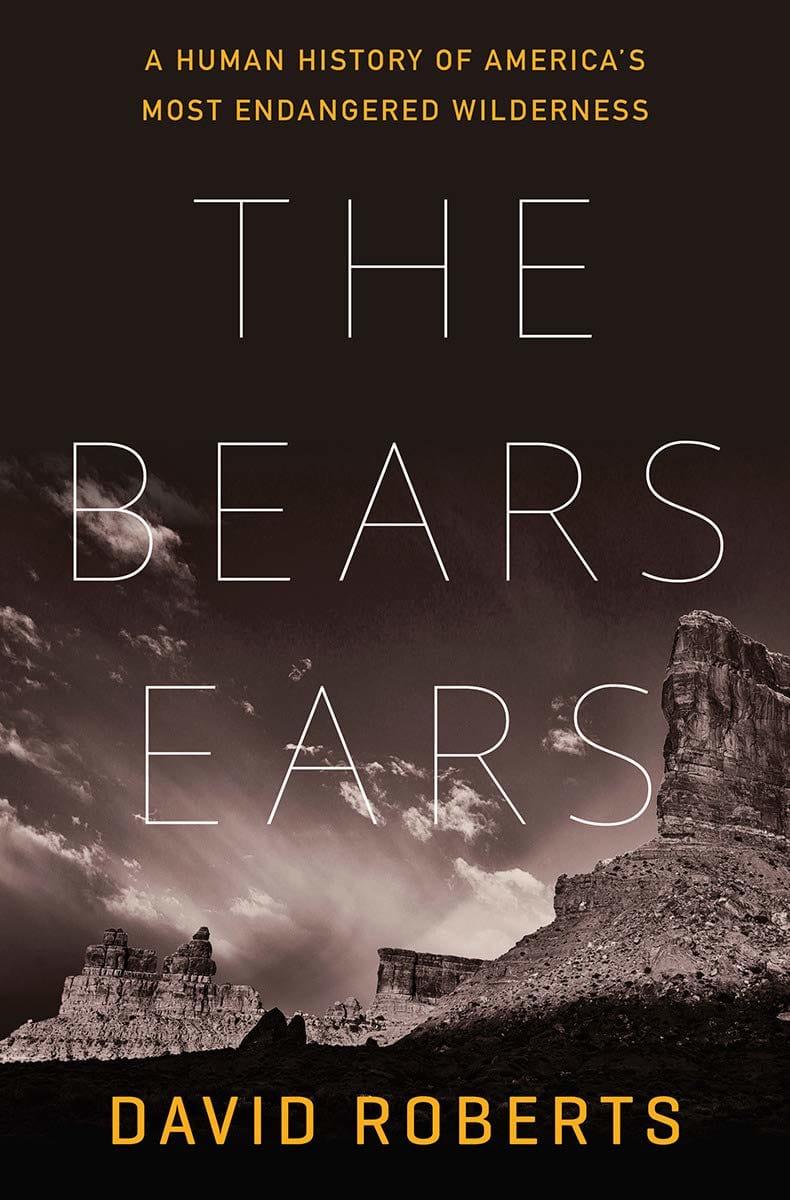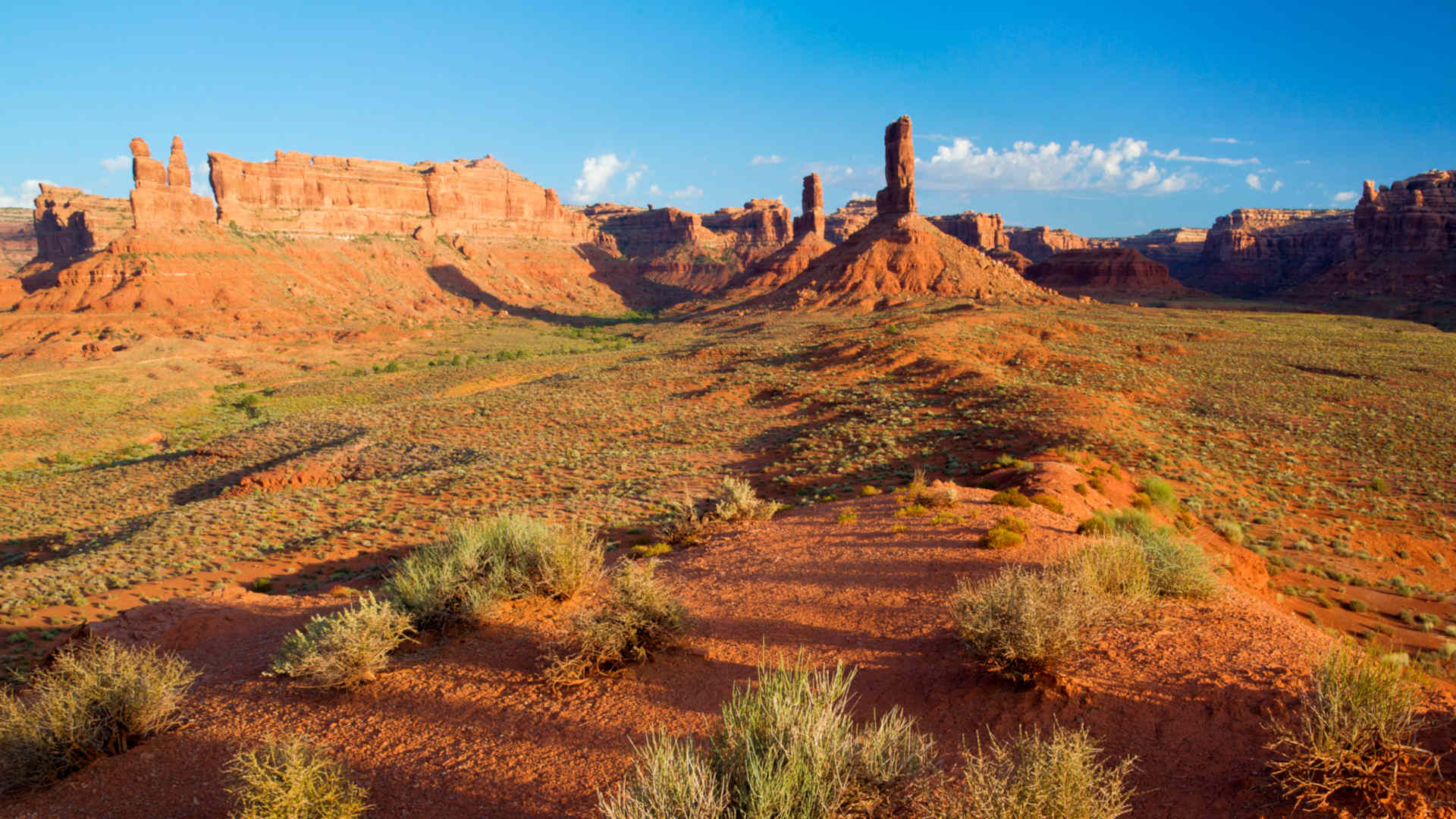For many Americans, the more than 1 million acres of rugged land in southeastern Utah known as the Bears Ears National Monument registers as a political flashpoint. Former President Barack Obama protected the land as a monument in 2016, recognizing the land’s spiritual and natural importance to American Indian tribes. Less than a year later, then-President Donald J. Trump announced plans to shrink the monument by 85 percent, making vast swaths of it available to mining and energy interests.
In January, just hours after taking office, President Joe Biden signed an executive order to review — and almost certainly reverse — the Trump move, setting off another round of legal and political debates over the land.
David Roberts’ new book, “The Bears Ears: A Human History of America’s Most Endangered Wilderness” makes the debate personal, showing how people have forged deep connections to this stretch of land for centuries. His non-chronological narrative takes readers back to 1250 A.D., when ancestral Puebloans settled the terrain, then profiles the outlaws, Mormon ranchers, adventurers, uranium miners, politicians, pot-hunters, and American Indian tribes who have all shaped the land — and have made some claim to its legacy.

BOOK REVIEW — “The Bears Ears: A Human History of America’s Most Endangered Wilderness,” by David Roberts (W. W. Norton & Company, 336 pages).
“We all want some part of our favorite place on earth to be ours, secreted from the rabble, tucked into the zippered pocket of our self-esteem,” Roberts writes. An adventurer and author of more than 24 books, Roberts even unabashedly says Bears Ears is his “favorite place on earth” and makes the book as much memoir as history.
The allure of the Bears Ears is clear. Named for two red rock buttes that jut out over a vast meadow, the rugged landscape has a captivating mix of natural beauty and archaeological treasures. A formation made primarily of sandstone which stretches dozens of miles called Comb Ridge, for example, is known as much for its stunning geology and rare fossil finds as the ancestral Puebloan petroglyphs carved into its face. It’s estimated that at least 100,000 prehistoric sites lie within the monument boundaries, including entirely preserved villages and structures barely seen by modern eyes.
For American Indians — notably the Ute Mountain Ute tribe, Navajo Nation, Ute Indian tribe of the Uintah and Ouray reservations, Hopi Nation, and Zuni Tribe — the land is deeply spiritual. Some trace their origin stories to the site and many still use it for ceremonies or to gather herbs, medicine, and food. This cultural importance led an unprecedented coalition of tribes organized as the Bears Ears Inter-Tribal Coalition to lobby former President Obama to designate it a national monument.
Roberts writes respectfully about this legacy, letting his characters speak to their own connection to the land. However, he is also adept at probing the contradictions between the scientific and the spiritual. Nearly all anthropologists, he writes, now conclude that both Navajos and Apaches migrated from the subarctic, although the time frame is still under debate. Further research, especially from the late David M. Brugge, has led to the conclusion that these “migrants from the north” must have merged with some of the people already living in the American West. It’s a more complicated narrative than the “bedrock Navajo belief that they have always (‘since time immemorial’)” lived in a patch of sacred land that includes Bears Ears.
“The Bears Ears” also helps readers understand how researchers are piecing together the ancient history of the land without continuing the devastating tradition of looting that is an inextricable part of the Bears Ears story. For centuries, antiquities were removed in the name of science, but a modern trend of “reverse archaeology” has motivated museums to return their finds to the ground and research ancient treasures on site. New remote sensing technology has even allowed them to probe Bears Ears without putting shovel to dirt, shedding more light on Indigenous societies without disturbing their legacies.
Roberts’ rich history also draws out the White settlers who have put their own stamp on the land. From the Franciscan friars Silvestre Vélez de Escalante and Francisco Atanasio Domínguez, the former of whom is believed to have created the first written reference to Bears Ears, to the Mormon Hole-in-the-Rock expedition of 1879, Anglo travelers have built their own origin stories in Utah based on the struggle that brought them there.
In part because of the “validating myth,” as Roberts writes, many white Utahns feel their own birthright to Bears Ears. A Western opposition to any federal intervention has backed up resistance to the monument debate. Extraction industries have also eyed the land’s stores of uranium, oil, and gas, lending additional urgency to the push for protections. Still, Roberts does not caricature these explorers or their descendants, even as he pokes at their opposition.
While on the surface, the fight over Bears Ears may fall along traditional ideologies, Roberts’ book teases out the nuanced and often counterintuitive web of science, history, archaeology, industry, and spirituality that makes the debate unique. The book was finished before Biden’s victory made clear that the monument would be restored. With Deb Haaland confirmed as the first Native American to lead the Interior Department, advocates are hopeful that the borders can even be expanded and that Indigenous perspectives can guide federal land management like never before.
Even the cementing of the monument designation is rife with contradiction. Roberts acknowledges that no protection will please everyone; “No Rachel Carson or John Muir is going to emerge to proclaim the just solution,” he admits. In 2015, he wrote in The New York Times that the area should be declared a National Conservation Area, one that would keep most visitors out. The monument, he says, is a “compromise,” one that could bring tourists and barriers to a wild sacred space.
His passion is well-earned; as he writes, “the human history of the Bears Ears is inextricably tied up with the nearly three decades I’ve spent wandering, camping, and prowling across it.” Roberts was diagnosed with stage four throat cancer in 2015 and once thought he might never return, and this nostalgia makes Roberts as much of a character as any historical figure.
“This is the part of the world that I love the most,” he writes, “the outback that if I were told I had only one more chance to see, I’d grab with both feet without a thought for any other choice.”
Jason Plautz is a Colorado-based reporter covering energy and environment policy.










